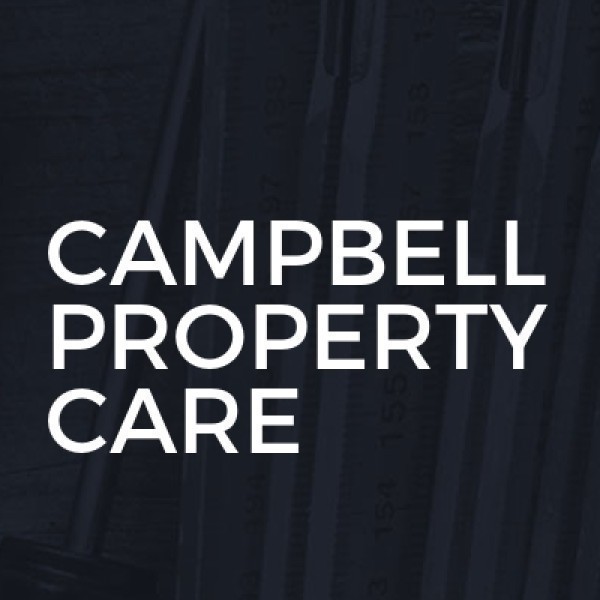Property Refurbishment in Hamilton
Welcome to Macdonald and Stewart Joinery Ltd, your trusted partner for all your construction needs in Polmadie and across Glasgow City. A... read more »
Campbell Property Care, nestled in the heart of Partick, is your go-to solution for all your construction needs across G... read more »
Welcome to Gordon's Home Improvements, the premier choice for all your tradespeople needs in Coltness and across North Lanarkshire. We sp... read more »
Welcome to Park Property Builders LTD, your trusted experts in painting, decorating, and property maintenance... read more »
Welcome to HSC Builders, the premier choice for all your construction needs in Blantyre, South Lanarkshire. With over 15 years of experie... read more »
Welcome to LH Joinery, your go-to experts for top-notch joinery and construction services in Flemington and throughout South Lanarkshire.... read more »
Welcome to JB Builders, the leading choice for all your building needs in Gartlea and throughout North Lanarkshire. Our team of expert tr... read more »
Welcome to WMR Contractors, your go-to experts for pr... read more »
Welcome to PJTC, your go-to experts for all things re... read more »
Welcome to Inspire Building Concepts Ltd, your truste... read more »
MTS Property Solution is a premier b... read more »
Welcome to CM All Trades LTD, your go-to solution for... read more »
Welcome to Candid Construction Scotland, your trusted... read more »
GNG Electrical Services, nestled in... read more »
Welcome to SCL Builders, your trusted partner for all... read more »
Welcome to Midas Scotland, your trusted partner for a... read more »
ZS Maintenance Ltd: Your Trusted Tradespeople... read more »
DGC Carpentry is a distinguished Kir... read more »
Welcome to KPM Contractors Limited, your trusted part... read more »
Search Property Refurbishment in places nearby
Understanding Property Refurbishment in Hamilton
Property refurbishment in Hamilton is a thriving industry, offering homeowners and investors the opportunity to enhance the value and appeal of their properties. Whether you're looking to modernise an old home or increase the market value of a property, refurbishment can be a rewarding venture. This article will explore the ins and outs of property refurbishment in Hamilton, providing insights into the process, benefits, and considerations involved.
The Importance of Property Refurbishment
Property refurbishment is more than just a facelift for your home. It involves a comprehensive overhaul that can significantly improve the functionality and aesthetics of a property. In Hamilton, where the property market is competitive, refurbishment can set your property apart, making it more attractive to potential buyers or tenants.
- Increased Property Value: Refurbishing a property can lead to a substantial increase in its market value, providing a good return on investment.
- Enhanced Living Experience: Modernising your home can improve comfort and convenience, making it a more enjoyable place to live.
- Energy Efficiency: Upgrading to energy-efficient systems and materials can reduce utility bills and contribute to environmental sustainability.
Key Steps in the Refurbishment Process
Embarking on a property refurbishment project requires careful planning and execution. Here are the essential steps to ensure a successful refurbishment in Hamilton:
1. Assessing the Property
Before starting any refurbishment project, it's crucial to assess the current condition of the property. This involves identifying areas that need improvement and determining the scope of work required. A thorough assessment helps in setting realistic goals and budgets.
2. Setting a Budget
Budgeting is a critical aspect of any refurbishment project. It's important to allocate funds for different phases of the project, including materials, labour, and unexpected expenses. Sticking to a budget ensures that the project is financially viable and prevents overspending.
3. Designing the Refurbishment Plan
A well-thought-out design plan is essential for a successful refurbishment. This involves selecting the right materials, colours, and layouts that align with your vision and the property's character. Consulting with a professional designer can provide valuable insights and ideas.
4. Hiring the Right Professionals
Choosing the right contractors and tradespeople is crucial for the quality and success of the refurbishment. It's advisable to hire experienced professionals with a proven track record in property refurbishment in Hamilton. Checking references and reviews can help in making informed decisions.
5. Obtaining Necessary Permits
Depending on the scope of the refurbishment, certain permits may be required. It's important to check with local authorities in Hamilton to ensure compliance with building regulations and avoid potential legal issues.
Popular Refurbishment Trends in Hamilton
Hamilton's property market is influenced by various refurbishment trends that cater to modern lifestyles and preferences. Here are some popular trends to consider:
Open-Plan Living
Open-plan living spaces are highly sought after, offering a seamless flow between different areas of the home. This design trend enhances natural light and creates a sense of spaciousness.
Smart Home Technology
Integrating smart home technology is becoming increasingly popular, allowing homeowners to control lighting, heating, and security systems remotely. This trend not only adds convenience but also increases the property's appeal.
Sustainable Materials
There's a growing emphasis on using sustainable and eco-friendly materials in refurbishment projects. This includes recycled materials, energy-efficient appliances, and low-VOC paints, contributing to a healthier living environment.
Challenges in Property Refurbishment
While property refurbishment offers numerous benefits, it also comes with its challenges. Being aware of these challenges can help in better preparation and management:
Unexpected Costs
Unforeseen expenses can arise during the refurbishment process, such as structural issues or additional repairs. It's important to have a contingency fund to address these unexpected costs.
Project Delays
Delays can occur due to various reasons, including weather conditions, supply chain disruptions, or contractor availability. Effective project management and communication can help mitigate these delays.
Maintaining Quality
Ensuring high-quality workmanship is essential for a successful refurbishment. It's important to monitor the progress and quality of work regularly to ensure that it meets the desired standards.
Benefits of Refurbishing Older Properties
Refurbishing older properties in Hamilton can be particularly rewarding, offering unique benefits:
- Preserving Heritage: Refurbishment allows for the preservation of historical and architectural features, maintaining the property's character and charm.
- Modern Amenities: Upgrading older properties with modern amenities can enhance comfort and functionality while retaining their original appeal.
- Cost-Effective: Refurbishing an older property can be more cost-effective than building a new one, especially when considering the potential increase in property value.
Choosing the Right Materials for Refurbishment
The choice of materials plays a significant role in the success of a refurbishment project. Here are some considerations when selecting materials:
Durability and Quality
Opt for materials that are durable and of high quality to ensure longevity and reduce maintenance costs. Investing in quality materials can lead to better outcomes and satisfaction.
Aesthetic Appeal
Choose materials that complement the overall design and aesthetic of the property. This includes selecting colours, textures, and finishes that align with your vision.
Environmental Impact
Consider the environmental impact of the materials used. Sustainable and eco-friendly options are not only better for the environment but can also enhance the property's appeal to environmentally conscious buyers.
Financing Your Refurbishment Project
Financing is a crucial aspect of any refurbishment project. Here are some options to consider:
Personal Savings
Using personal savings is a straightforward way to finance a refurbishment project, avoiding interest payments and debt.
Home Improvement Loans
Home improvement loans are specifically designed for renovation projects, offering flexible terms and competitive interest rates.
Government Grants and Incentives
In some cases, government grants and incentives may be available for refurbishment projects, particularly those that focus on energy efficiency and sustainability.
Legal Considerations in Property Refurbishment
Understanding the legal aspects of property refurbishment is essential to avoid potential issues:
Building Regulations
Ensure compliance with local building regulations and codes to avoid legal complications and ensure the safety and quality of the refurbishment.
Planning Permissions
Depending on the scope of the project, planning permissions may be required. It's important to check with local authorities in Hamilton to determine the necessary approvals.
Contractual Agreements
Having clear contractual agreements with contractors and suppliers is crucial to protect your interests and ensure that the project is completed as agreed.
Maximising Return on Investment
To maximise the return on investment from a refurbishment project, consider the following strategies:
Focus on High-Impact Areas
Concentrate on refurbishing high-impact areas such as kitchens and bathrooms, which are known to significantly increase property value.
Quality Over Quantity
Prioritise quality improvements over extensive changes. High-quality finishes and materials can have a greater impact on property value than numerous minor upgrades.
Market Research
Conduct thorough market research to understand buyer preferences and trends in Hamilton. This can help tailor the refurbishment to meet market demands and maximise appeal.
Frequently Asked Questions
- What is the average cost of property refurbishment in Hamilton? The cost varies depending on the scope and scale of the project, but it typically ranges from £20,000 to £100,000.
- How long does a typical refurbishment project take? The duration depends on the complexity of the project, but most refurbishments take between 3 to 6 months to complete.
- Do I need planning permission for a refurbishment? Planning permission may be required for significant structural changes or extensions. It's best to consult with local authorities.
- Can refurbishment improve energy efficiency? Yes, incorporating energy-efficient systems and materials can significantly improve a property's energy efficiency.
- Is it better to refurbish or rebuild? Refurbishment is often more cost-effective and less time-consuming than rebuilding, especially for properties with historical value.
- How can I ensure quality workmanship? Hiring experienced professionals, setting clear expectations, and regularly monitoring progress can help ensure quality workmanship.
Property refurbishment in Hamilton offers a wealth of opportunities for enhancing property value and appeal. By understanding the process, trends, and considerations involved, homeowners and investors can make informed decisions and achieve successful outcomes. With careful planning and execution, refurbishment can transform a property into a modern, comfortable, and valuable asset.
Send a message










